Affiliate links on Android Authority may earn us a commission. Learn more.
The Pixel 9 Pro Fold has confused me: Hands-on impressions of Google's new foldable
Google just launched a massive array of products at its annual Made by Google event in Mountain View. The event was headlined by the Google Pixel 9 series, which was expanded from two phones to four. First, Google introduced us to the Pixel 9 Pro, a phone that takes nearly everything you’d expect from a sequel to the Pixel 8 Pro and crams it into a device that is the same size as the Pixel 8. Additionally, Google also launched the Pixel 9 Pro Fold, which, ostensibly, is a spiritual successor to its first, and so far only, foldable phone, the Pixel Fold.
I had the opportunity to use every phone in the Made by Google lineup about a week before the show. I’ve already told you about my impressions of the non-foldable Pixel 9 phones, and here I want to tell you specifically about the Pixel 9 Pro Fold.
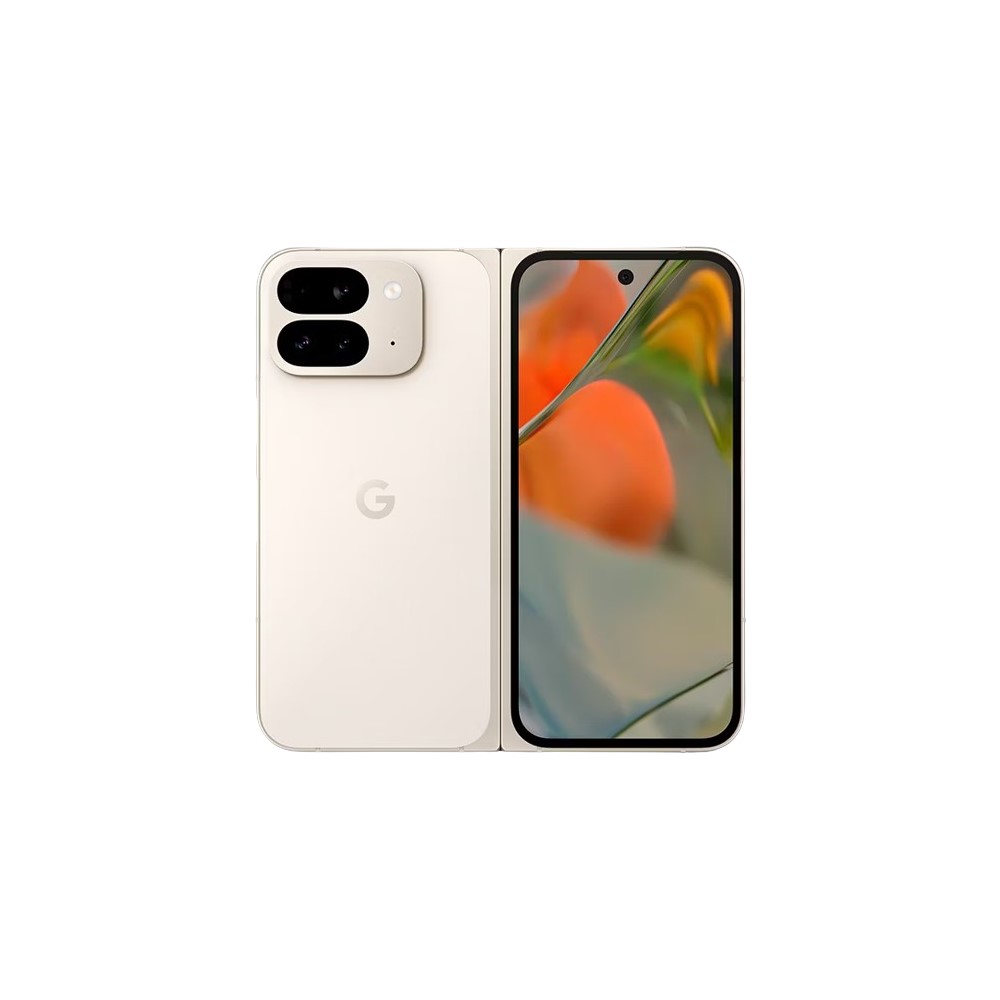

Pixel 9 Pro Fold: A complete redesign
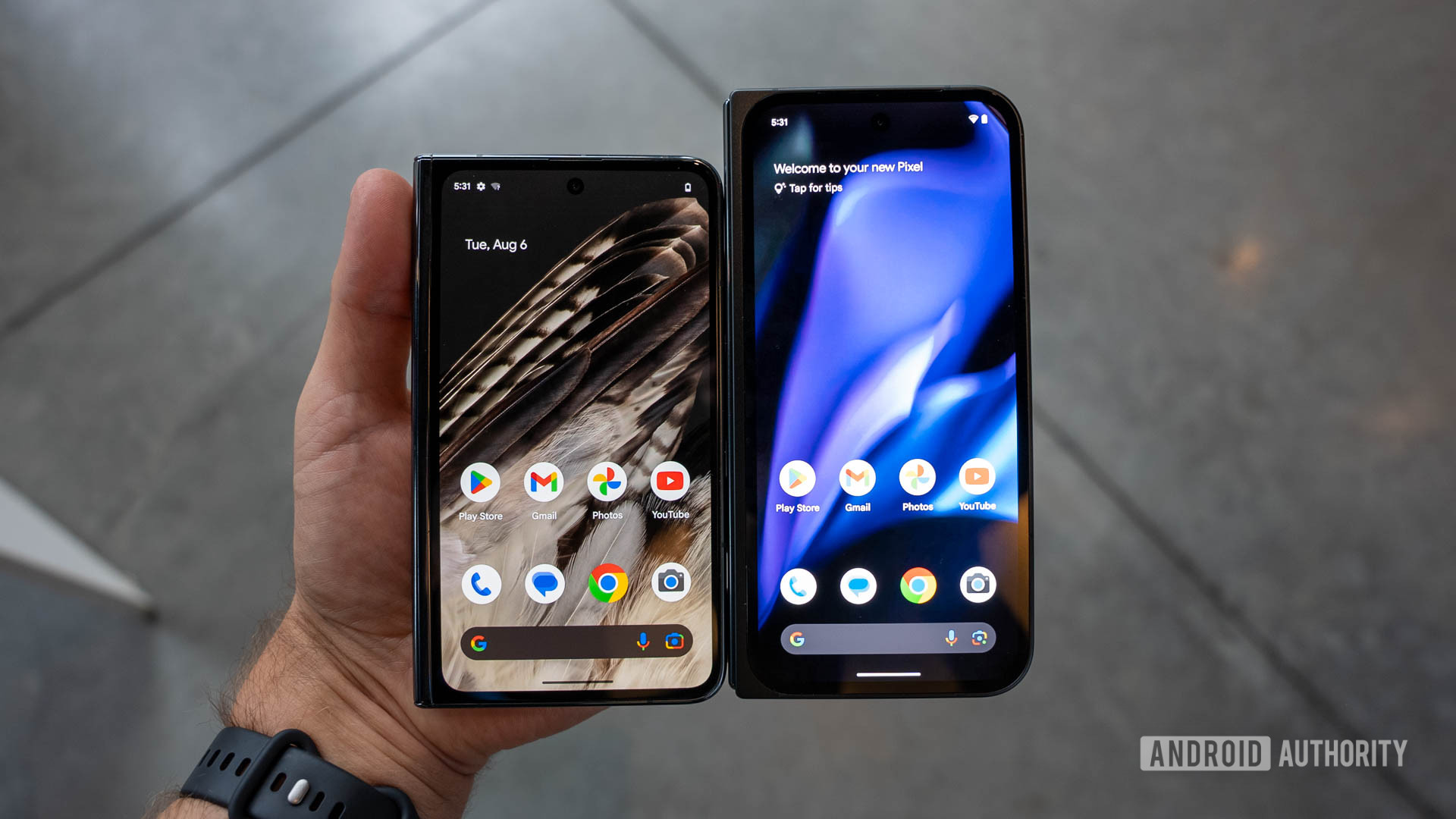
The first thing I said to myself when I held the Pixel 9 Pro Fold in my hand was, “Wow, this is like a completely different phone.” Although Google kept a few design elements from the original Pixel Fold, it certainly changed more than it kept.
First, the “passport” look and feel of the Pixel Fold is gone. Instead, we have a foldable much closer to the rest of the Pixel 9 series in size and shape. The cover display looks like it was directly lifted from the Pixel 9 with the same aspect ratio (20:9), display size (6.3 inches), and even resolution (1,080 x 2,424). Of course, the Pixel 9 Pro Fold’s bezels are much thicker (but still uniform, which is nice), and its overall chunkiness makes it feel wholly different in the hand. Still, it’s not hard to connect the design language of the foldable to the language of the non-foldables when looking at it from the front. It’s certainly easier to connect it to the Pixel 9 series than to the original Pixel Fold, as exemplified in the image above.
Google abandoned the 'passport' look of the Pixel Fold and adopted some (but not all) of the design elements of the Pixel 9 series.
Flipping the phone over, though, the foldies and non-foldies diverge. The Pixel 9 Pro Fold’s camera module looks nothing like the one on the backs of the non-foldables. You can make the connections if you think about it — the glass cutouts housing the camera lenses are similarly shaped, for example — but the Fold’s module makes it seem like a distant cousin of the rest of the Pixel 9 family rather than a true sibling.
I’m not sure why Google made this decision. I can only imagine it was an engineering limitation, as I’m sure Google would have wanted the same camera bar on all four phones if it could manage it. It was able to put a camera bar into the original Pixel Fold, though, so who knows, really. Either way, it ended up going with the module you see below.
Opening the phone up, we see yet another redesign. The original Pixel Fold had very thick bezels surrounding the inner display — so thick that they could house the inner selfie camera, leaving the foldable display uninterrupted. This year, though, Google abandoned that approach and went with a right-aligned display cutout for the internal selfie camera.
Google revamped the internal display, going a different route from both the Pixel Fold and its main competition, the Galaxy Z Fold 6.
This was an interesting choice, mainly because Google’s primary competitor in this space — Samsung with its Galaxy Z Fold 6 — has had under-display selfie cameras for a few years now. Google likely opted not to go that route because under-display selfie cameras have a severe lack of quality compared to even the cheapest “normal” selfie cameras. Whatever the reason, the inside of the Pixel 9 Pro Fold looks much different from the inside of the Pixel Fold, as seen in the image below:
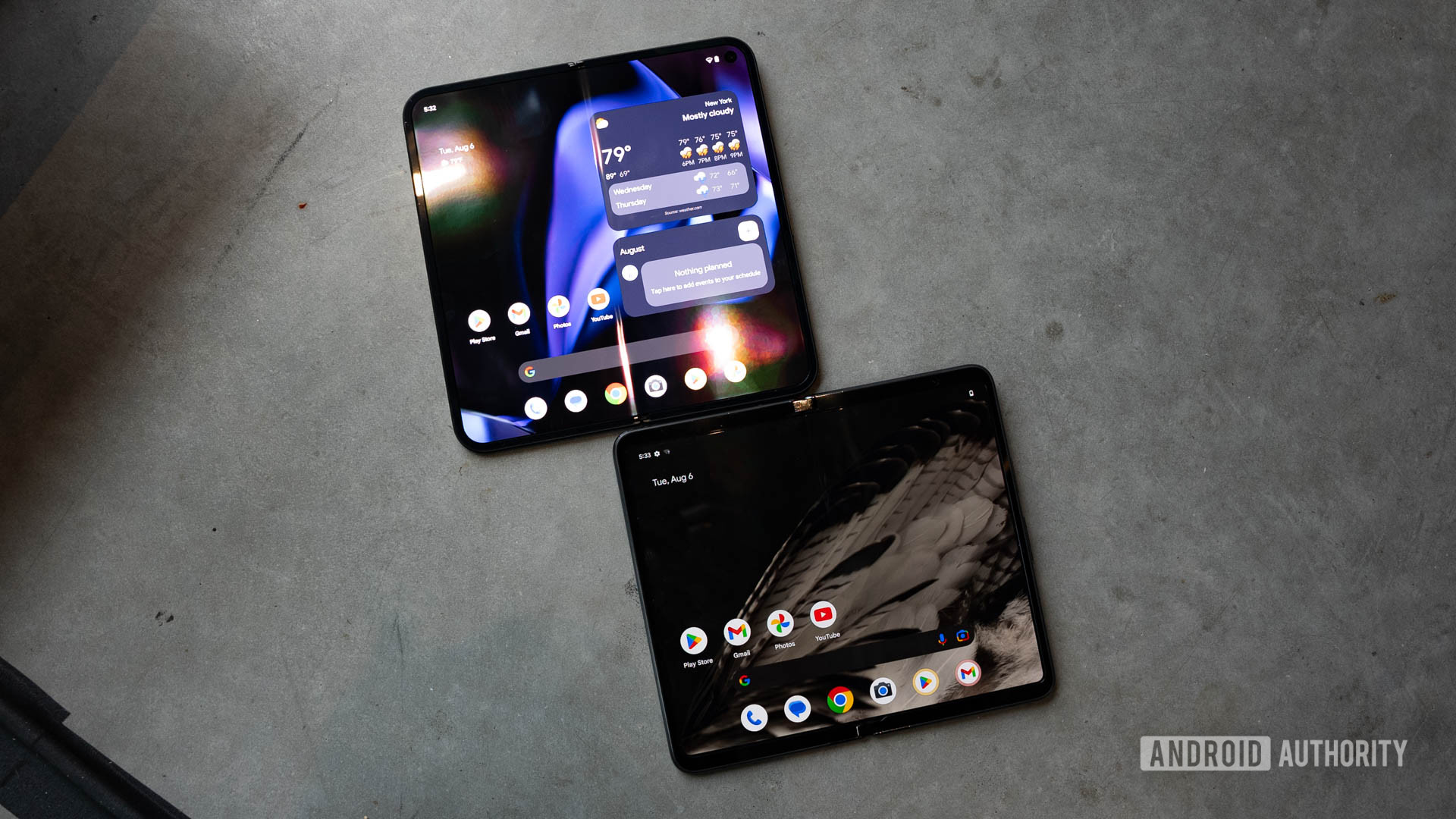
Finally, there’s one design element that Google really wants you to focus on, which is how thin the Pixel 9 Pro fold is. In its folded state, it has a thickness of 10.5mm, significantly less than the Galaxy Z Fold 6’s 12.1mm thickness. The same story goes when it’s unfolded, which gives it a thickness of just 5.1mm, or about 0.5mm less than the Galaxy Z Fold 6. These dimensions make it the thinnest book-style foldable you can get in the United States, a fact Google will play up big in its marketing push for the Pixel 9 Pro Fold.
Of course, the “…in the United States” caveat gives Google a big advantage. Chinese manufacturers have phones that are significantly thinner than the Pixel 9 Pro Fold, such as the HONOR Magic V3, which currently holds the crown as the thinnest book-style foldable commercially available at a jaw-dropping 2.6mm when unfolded. HONOR’s phone is just not available here in the US, and it probably never will be, so Google is exploiting that.
Anyway, you can see how thin the 9 Pro Fold is in the images below. The demonstration of its thickness compared to the Pixel 9 Pro is pretty impressive:
Regardless of these various design decisions, the Pixel 9 Pro Fold looks and feels great. It sat in my hand comfortably, wasn’t excessively heavy, had a strong, steady hinge, and folded completely flat. It’s a beautiful foldable, there is no doubt — it’s just strange that it’s so wildly different from its predecessor.
Under-the-hood changes
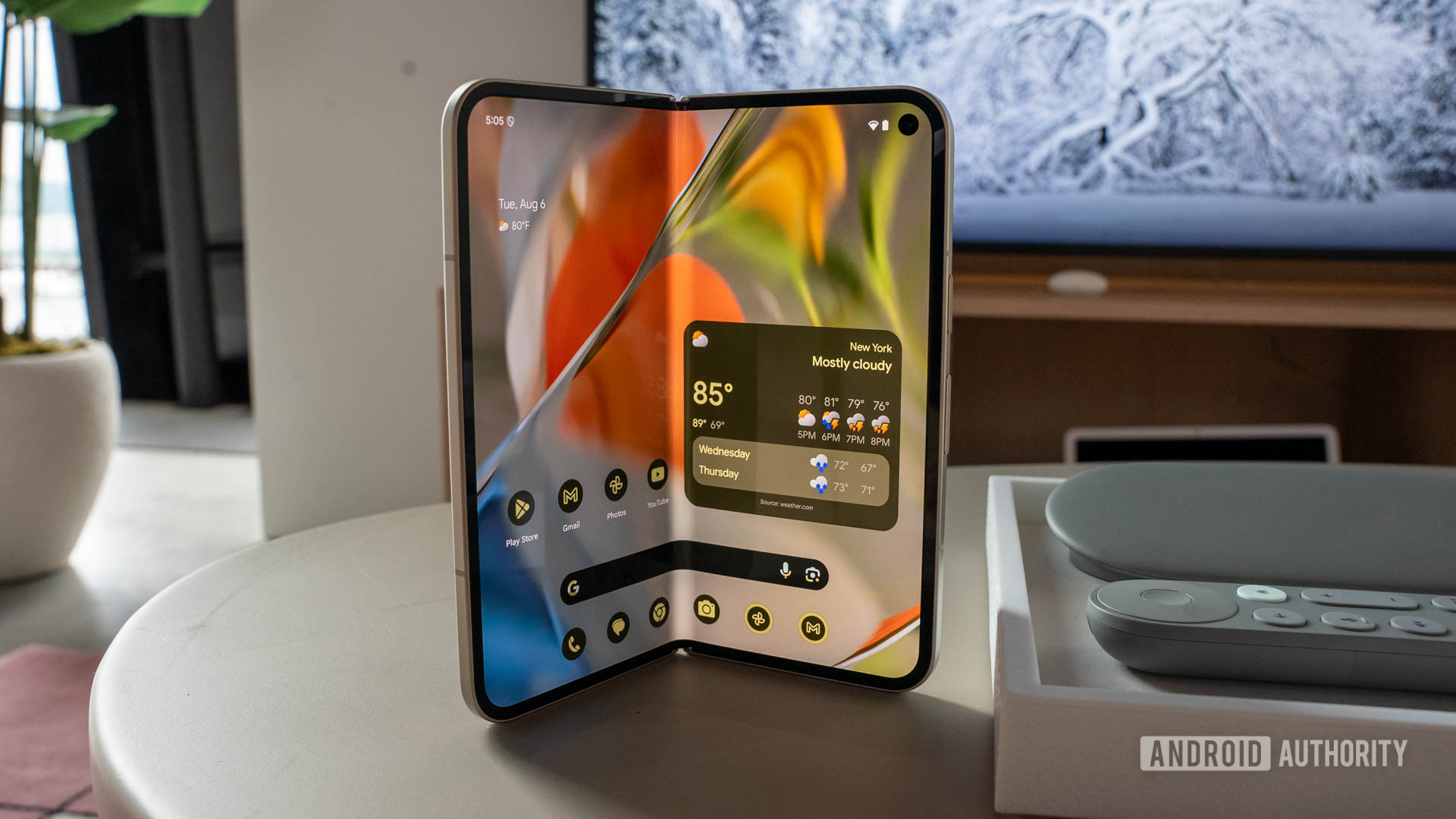
As usual, Google has bumped a lot of specs for the Pixel 9 Pro Fold when compared to the Pixel Fold. We have a full specs table later on in this review, but I want to focus on a few of the most notable things Google upgraded — and a few things it didn’t upgrade.
Processor
First, Google brings the Tensor G4 to the Pixel 9 Pro Fold, the same processor in all the other Pixel 9 phones. Because the Pixel Fold launched in May 2023 with the Tensor G2, this essentially means the Pixel 9 Pro Fold skips a full generation. Theoretically, this should allow the Pixel 9 Pro Fold to be more powerful than the Pixel Fold.
The Pixel 9 Pro Fold comes with Google's 2024 chipset, which means those who upgrade from the Pixel Fold will go from Tensor G2 right to G4.
However, everything we know about the Tensor G4 points to only nominal upgrades over the Tensor G3. In other words, don’t expect performance to be like night and day when compared to the Pixel Fold. There will be gains, for sure, but we don’t expect anything akin to jumping from a Snapdragon 8 Gen 1 to a Snapdragon 8 Gen 3, for example. We’ll have extensive testing reports of the Tensor G4 as soon as possible, so stay tuned for that.
During my limited time with the Pixel 9 Pro Fold, I thought it performed admirably. Response times were quick, jumping from the cover display to the inner display was smooth, and swiping around the operating system was snappy. Obviously, that’s not the objective testing results you want right now, but we’ll have more concrete information in time.
Cameras
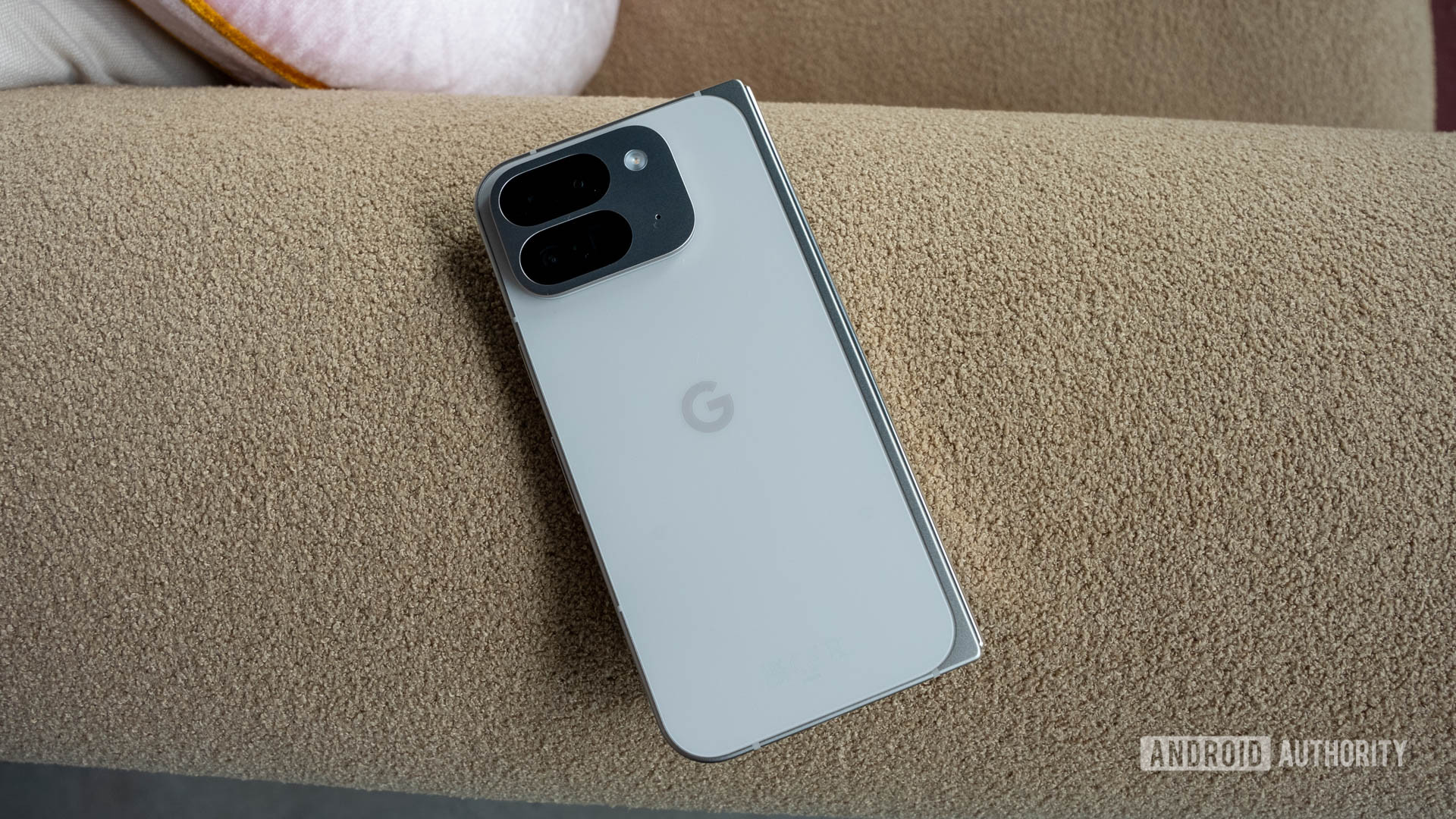
Google also slightly updated the camera experience on the Pixel 9 Pro Fold compared to its predecessor. The rear ultrawide camera gets a 10.5MP sensor with a 127-degree field of view (FoV) and support for Macro Focus. On paper, this should be better than the Pixel Fold’s ultrawide, which was a 10.8MP sensor with a 121-degree FoV and no Macro Focus support. So that’s good news.
The bad news is that that’s it for rear camera upgrades. The other two sensors — primary and telephoto — are both the same as the Pixel Fold. This will likely prevent the Pixel 9 Pro Fold from being anywhere near as good at photos/videos as the Pixel 9 Pro and Pro XL and almost certainly will prevent it from being included on our list of the best camera phones you can get.
Google upgraded some cameras here but left a few core ones unchanged.
Thankfully, the two selfie cameras did get upgraded. They are now identical 10MP shooters with an 87-degree FoV. This is a cool tweak because it means you should see the same selfie experience whether you’re using the cover display or the inner display. This is something Samsung’s inner under-display cameras on the Z Fold series can’t offer. Still, those 10MP sensors won’t compare to the new 42MP sensors in the Pixel 9 Pro and Pro XL.
I didn’t get to put the Pixel 9 Pro Fold’s camera through any rigorous testing, but I didn’t see any difference between using the cover display’s camera and the inner display’s camera. In fact, I noted to myself at the time that doing a Google Meet call with the Pixel 9 Pro Fold in its unfolded state would probably be a much better experience than on any other foldable I’ve used.
Some welcome software changes and new features
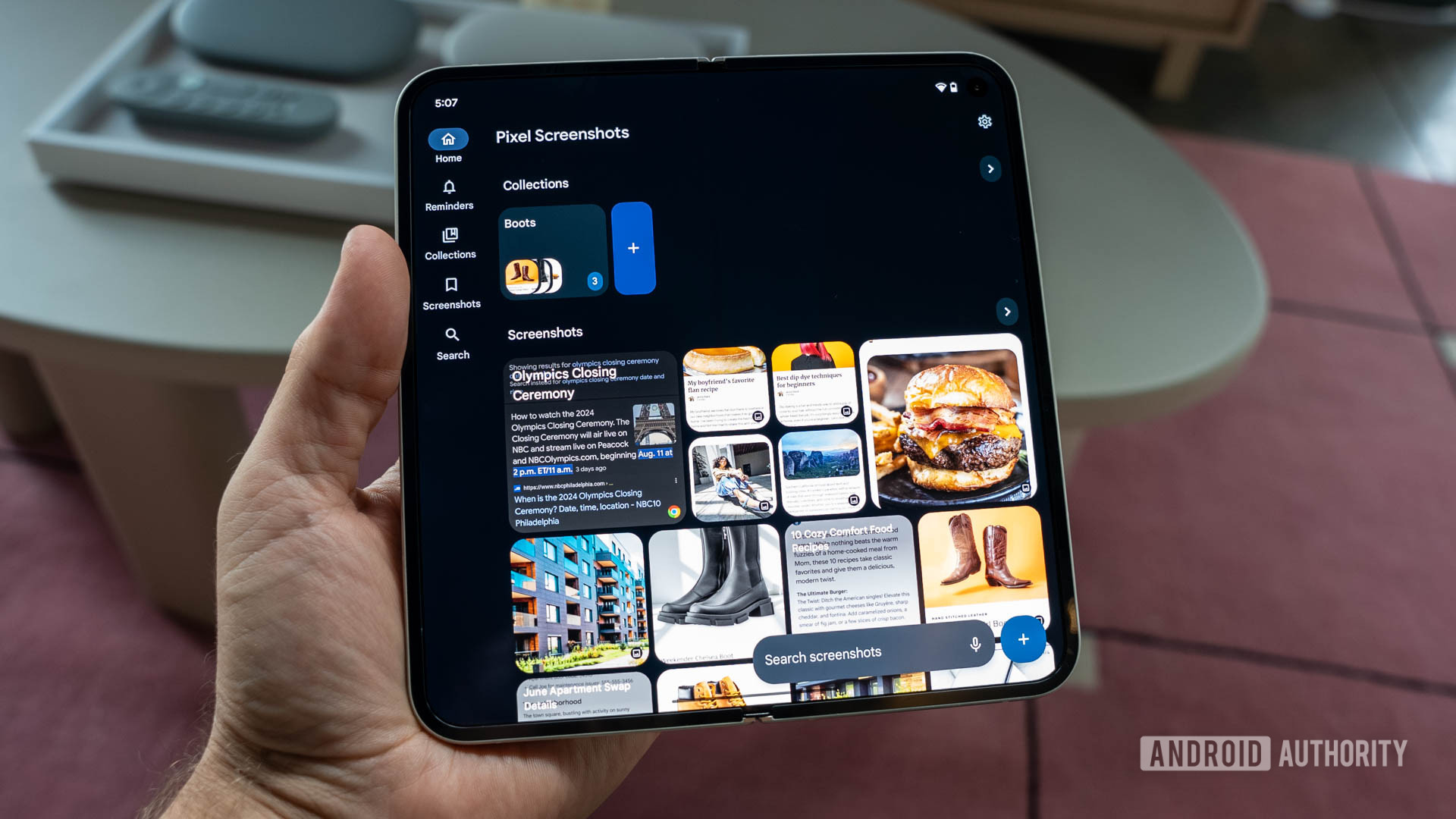
Since this is 2024, and we’re talking about new Pixel phones, it shouldn’t be surprising to know that Gemini features are the star of the show. In fact, there are so many new Gemini-powered features in the Pixel 9 series that I couldn’t even begin to cover them all here. Instead, I’m going to give you a very brief rundown of some Gemini highlights that work on all Pixel 9 phones — including the 9 Pro Fold — and then focus on three software features that are exclusive to the Pixel 9 Pro Fold.
Gemini features on all Pixel 9 phones
These are, in my opinion, the five coolest new Pixel 9 Gemini features:
- Add Me: This is a new camera feature that solves the problem of you wanting a group photo, but there’s no one around to take it for you. In the first step, one member of the group snaps a photo of everyone else. In the second step, a different member of the group photographs the original photographer standing in the spot they would have been in if they hadn’t had the camera. Gemini then stitches these two photos together seamlessly, allowing everyone to be in the photo at the same time.
- Pixel Screenshots: This is a new app that will house all your screenshots. Gemini will scan them all as you capture them. These scans will result in summaries of the screenshots’ contents, allowing you to search for that information later easily.
- Call Notes: This is baked into the Phone app. It will record your calls, create a transcript, and then use Gemini to create a brief summary of the call. As with the new Screenshots app, you can then search these summaries and transcripts for information at a later date.
- Pixel Studio: This is an image generator that will appear as a standalone app on the new Pixel phones. Based on Google’s Imagen 3, it will not only create images from your text prompts but also allow you to “edit” the images after they are created. For example, you could say, “Create an image of a dog riding a bike,” and then, when you see the resulting image, say, “Change the bike to a motorcycle,” and it will change just that element.
- Pixel Weather: This is also a new standalone app on Pixel 9 phones. It’s basically a weather app (surprise, surprise), but has an AI element to it. Gemini Nano will create AI weather summaries to give you context about the expected conditions. For example, it won’t just say, “Expect rain,” but say something like, “Cold and rainy day, bring your umbrella and hold onto your hat!” Essential? No. Fun? Yes.
Of these, I got to use Add Me, Screenshots, Studio, and Weather. All of them worked as expected and seemed to be very polished, which is notable when you see how far behind Apple is with Apple Intelligence vs Gemini. If nothing else, the Pixel 9 series is a testament to Google’s dominance with AI on smartphones.
Pixel 9 Pro Fold-exclusive software features
One of the most significant quality-of-life improvements Google is bringing to the Pixel 9 Pro Fold compared to the Pixel Fold is how it opens apps on the inner display when you first open it up. On the Pixel Fold, because of its unique inner display aspect ratio, apps you were using on the cover display would open in landscape mode on the inner display. This made things look wonky when using apps not already optimized for larger screens.
Thankfully, this problem doesn’t happen on the Pixel 9 Pro Fold. When you use an app on the cover display and then unfold the phone, the app continues on the inner display in portrait mode. Pixel Fold users will likely be very, very happy to hear about this.
The Pixel 9 Pro Fold's exclusive features include a photo mode called Made You Look and the ability to stream multiple feeds on YouTube TV.
Elsewhere, Google has a new camera feature exclusive to the Pixel 9 Pro Fold called Made You Look. This aims to solve a unique problem when photographing children. When adults take pics of kids, they usually make faces or sounds to catch the child’s attention. Unfortunately, this means the resulting photo shows the child looking at the adult and not the camera lens.
Made You Look is used with the Pixel 9 Pro Fold in its opened state. The cover display — facing the child in this mode — shows fun cartoony images that will grab the child’s attention for you. Now, you can take your shot with the child looking at the camera instead of you.
Finally, the Pixel 9 Pro Fold will support a YouTube TV feature that wouldn’t be possible on any other form factor, which is the ability to watch four livestreams at once. This will be useful for sports fans who want to watch game coverage from multiple sources.
Google Pixel 9 Pro Fold specs
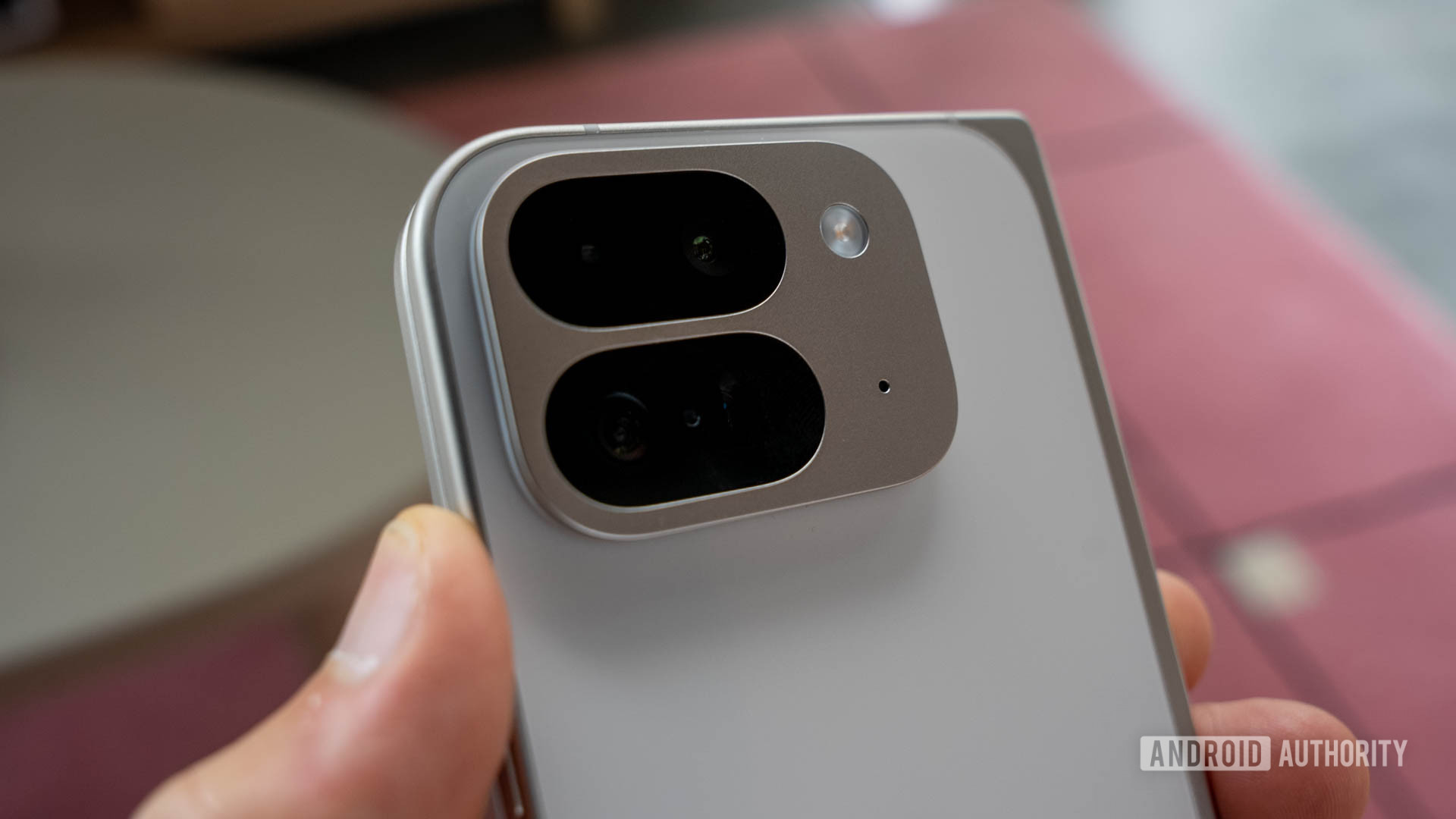
As mentioned earlier, the Pixel 9 Pro Fold is very different from the Pixel Fold, and as such, its spec sheet is very different, too. Check out all the known official specs below.
| Google Pixel 9 Pro Fold | |
|---|---|
Displays | Exterior: - 6.3-inch OLED - 60-120Hz refresh rate - 1,080 x 2,424 resolution - 20:9 aspect ratio - Gorilla Glass Victus 2 Interior display: - 8-inch folding - LTPO (1-120Hz refresh rate) -2,076 x 2,152 resolution - Ultra Thin Glass |
Processor | Google Tensor G4 |
RAM | 16GB |
Storage | 256GB No expandable storage |
Power | 4,650mAh battery 21W wired charging Wireless charging No charger in box |
Cameras | Exterior rear: - 48MP wide, ƒ/1.7, 1/2-inch sensor, 82-degree FoV - 10.5MP ultrawide, ƒ/2.2, 1/3.4-inch sensor, 127-degree FoV, Dual PDAF, macro mode - 10.8MP telephoto, ƒ/3.1, 1/3.2-inch sensor, 23-degree FoV, 5x optical zoom (20x digital), Dual PDAF Exterior front: - 10MP, ƒ/2.2, 87-degree FoV Internal camera: - 10MP, ƒ/2.2, 87-degree FoV |
Connectivity | 5G (mmWave + Sub6) Wi-Fi 7 Bluetooth 5.3 UWB |
Durability | IPX8 |
SIM | Dual SIM (single nano-SIM and eSIM) |
Biometrics | Side-mounted fingerprint scanner Camera-based face unlock (Class 3) |
Software | Android 14 (Will be among first to have Android 15 update) |
Safety features | Satellite SOS (US only) Emergency SOS Crisis Alerts Car Crash Detection Safety Check |
Dimensions and weight | Folded dimensions: - 155.2 x 77.1 x 10.5mm Unfolded dimensions: - 155.2 x 150.2 x 5.1mm Weight: - 257g |
Colors | Obsidian, Porcelain |
Warranty | 7 years of OS updates and security patches |
Google Pixel 9 Pro Fold hands-on impressions: What’s the strategy?
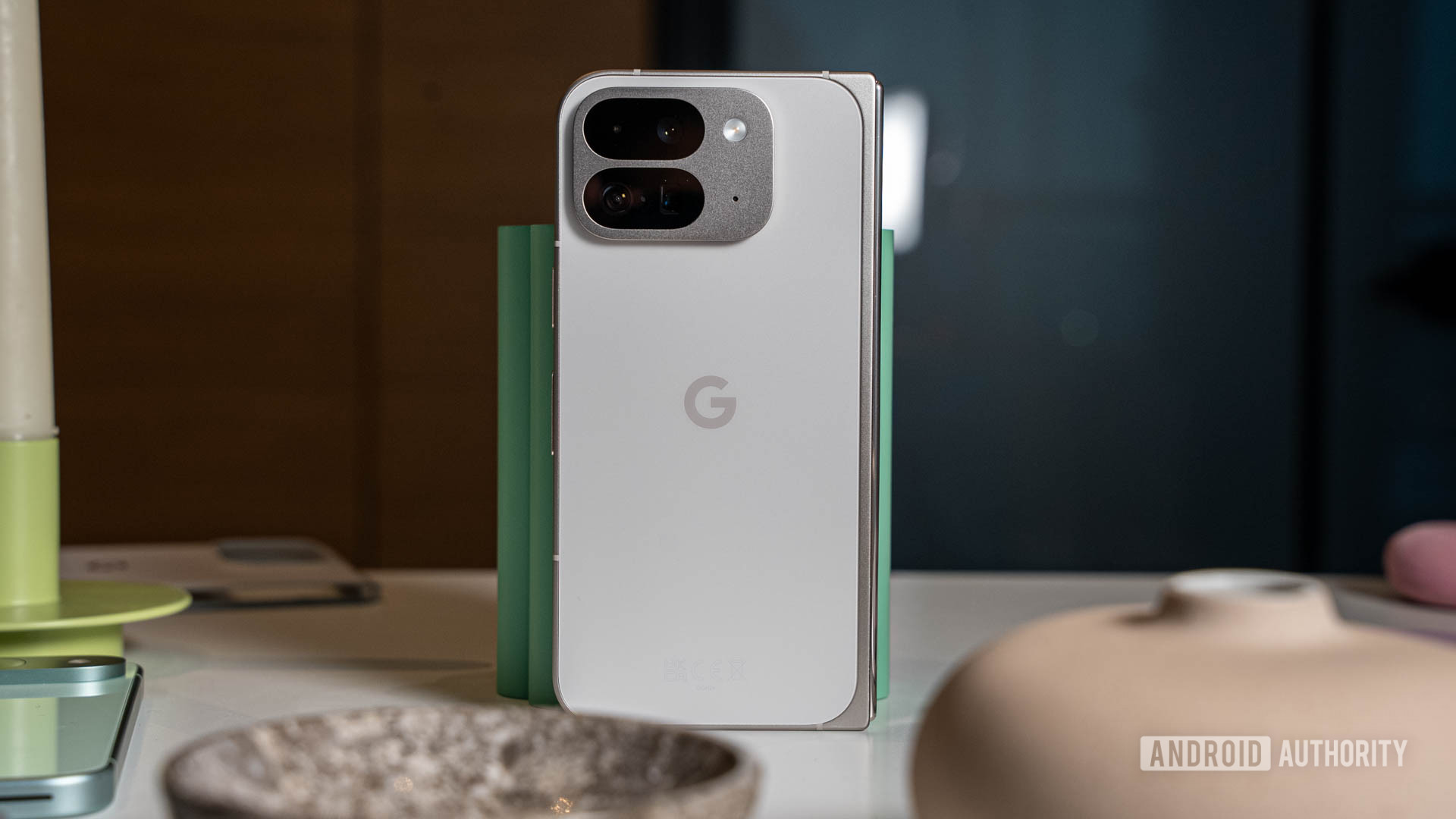
During Google’s pre-launch briefing on the Pixel 9 series, it told us the Pixel 9 Pro Fold is the “ultimate pro phone” that “sits at the very top of our portfolio.” When it said that, I got excited. I thought to myself, “okay, what secret powers is it going to give this phone that we didn’t learn from the extensive leaks beforehand?” But then Google told us about a foldable phone with so-so camera specs, a cover display that matches the lowest-end phone in the family, and two exclusive software features that will only be useful to very specific users (parents of young children and hardcore sports fans who use YouTube TV). This is the “ultimate pro phone?”
Granted, the Pixel 9 Pro Fold is demonstrably better than the Pixel Fold. The design is better, in my opinion, and there are enough notable spec upgrades here to make it worth an upgrade — especially when you consider the entry price is the same as the Pixel Fold at $1,799. But “ultimate pro phone,” it decidedly is not. The Pixel 9 Pro XL costs $700 less and will likely give you a better camera experience, nearly all the same software features, and will even charge significantly faster than the Pixel 9 Pro Fold’s laughably terrible 21W speed.
What Google wants the Pixel 9 Pro Fold to be is not what it actually is, but it's a step in the right direction.
In other words, Google is trying to position the Pixel 9 Pro Fold as a phone that it just isn’t. It’s not better or, in many cases, even as good as the Pixel 9 Pro or Pixel 9 Pro XL. It folds. That’s its distinct advantage.
This all leaves me wondering what Google is really trying to do with the Pixel 9 Pro Fold. From where I’m sitting, it would have made more sense for it to lean into the idea of this being the ultimate pro phone by really bringing over every single thing of the Pixel 9 Pro XL but in a foldable. However, that would have likely meant increasing the thickness, price, or both, so Google went in a different direction. That’s fine, but it can’t then still try to paint this as something it’s not. It’s trying to have its cake and eat it, too.
Google Pixel 9 Pro Fold vs Samsung Galaxy Z Fold 6: Which is the better buy?
This might all seem nitpicky, but it’s just how I felt after my limited time with the device. On its own, the Google Pixel 9 Pro Fold is a beautiful, high-powered foldable that brings a lot of the best elements of the Pixel ecosystem to a very versatile form factor. But, viewed within the Pixel ecosystem — and the wider competition it has in the foldable market — it is much more awkward of a device than Google seems to want to admit.
What do you think? Did Google hit it out of the park with the Pixel 9 Pro Fold or should it have taken a different direction? Let us know your opinions in the comments below, and stay tuned for our full in-depth review coming very soon!

